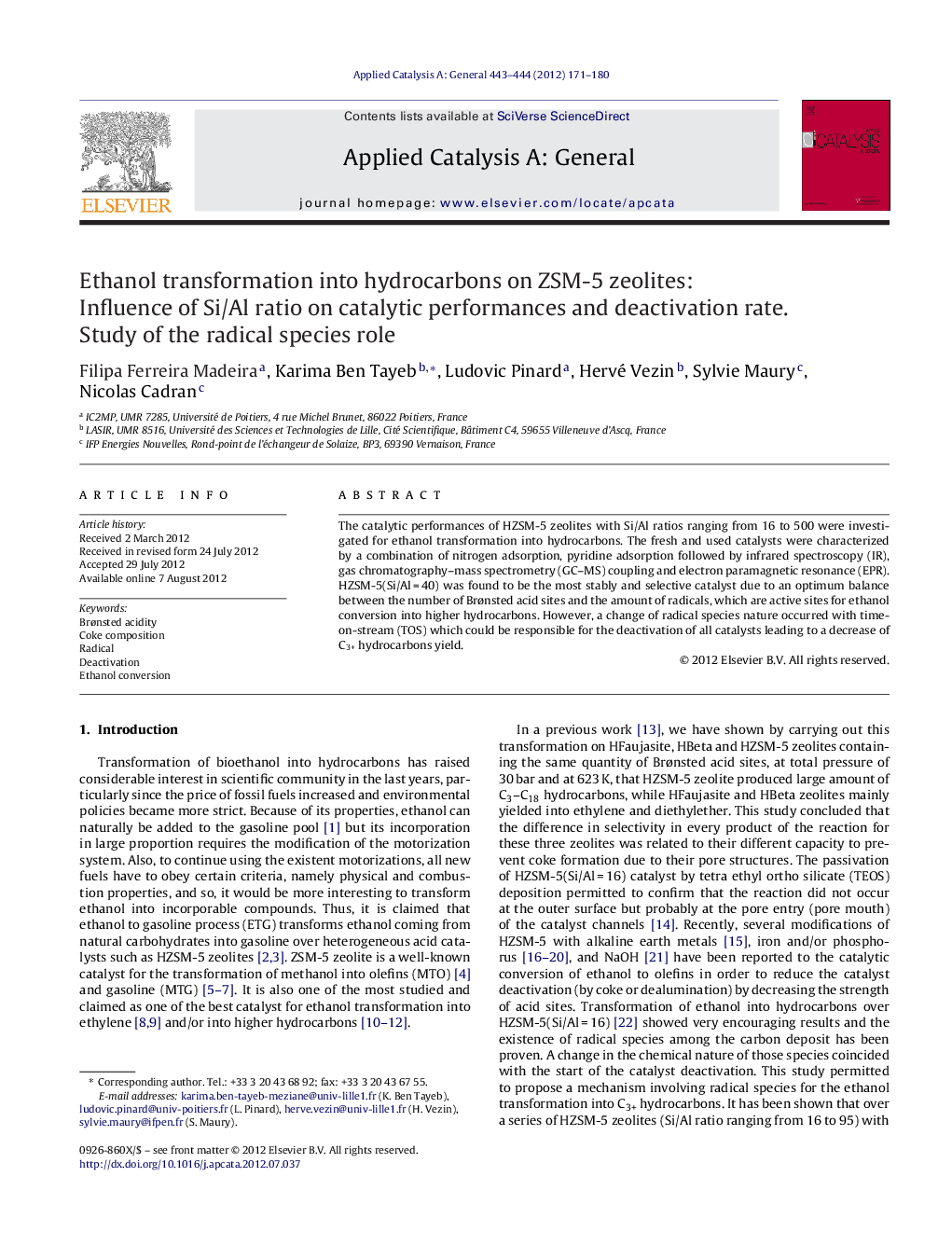| Article ID | Journal | Published Year | Pages | File Type |
|---|---|---|---|---|
| 40685 | Applied Catalysis A: General | 2012 | 10 Pages |
The catalytic performances of HZSM-5 zeolites with Si/Al ratios ranging from 16 to 500 were investigated for ethanol transformation into hydrocarbons. The fresh and used catalysts were characterized by a combination of nitrogen adsorption, pyridine adsorption followed by infrared spectroscopy (IR), gas chromatography–mass spectrometry (GC–MS) coupling and electron paramagnetic resonance (EPR). HZSM-5(Si/Al = 40) was found to be the most stably and selective catalyst due to an optimum balance between the number of Brønsted acid sites and the amount of radicals, which are active sites for ethanol conversion into higher hydrocarbons. However, a change of radical species nature occurred with time-on-stream (TOS) which could be responsible for the deactivation of all catalysts leading to a decrease of C3+ hydrocarbons yield.
Graphical abstractFigure optionsDownload full-size imageDownload high-quality image (82 K)Download as PowerPoint slideHighlights► Ethanol transformation is accompanied by a great loss of acidity and microporosity. ► The Brønsted acid sites and the radicals are active sites for ethanol conversion. ► An optimum balance between both is required for obtaining a high yield in hydrocarbons. ► HZSM-5(40) was found to be the most stably and selective catalyst toward hydrocarbons yield. ► A change of radical species nature with TOS is responsible for the deactivation.
